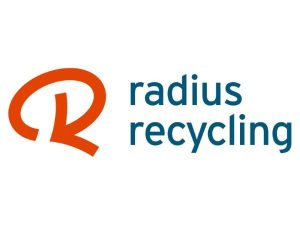
Steelmaking raw material prices mixed in April
Prices of steelmaking raw materials have moved in different directions over the last 30 days, according to Steel Market Update’s latest analysis.

Prices of steelmaking raw materials have moved in different directions over the last 30 days, according to Steel Market Update’s latest analysis.

Over the last several years, I have noticed widening spreads between #1 Heavy Melting Steel (ISRI 201) and Shredded (ISRI 210,211), as well as Plate & Structural (ISRI 232).

Prices of most steelmaking raw materials have moved lower over the last 30 days, according to Steel Market Update’s latest analysis.

The ferrous scrap market experienced a sharp decline for March shipments. Prime scrap fell $60-70 per gross ton (gt) while shredded and other obsolete grades declined $40-50/gt. It seems these prices were accepted in the trade by dealers across the continent.

US ferrous scrap prices fell steeply in March for HMS, shredded, and prime scrap, sources told SMU.

As I see it, the market looked to be a perfect storm for consumers this month while two large steel mills tried to put a floor on hot-rolled coil (HRC). One source speculated that “flat rolled mills coordinated their downtime and will take out 250,000 tons of capacity in April,” which made them attempt to put a bottom on flat-rolled product.

A Detroit area steelmaker this morning announced its offers for scrap for March scrap shipments. The drop in its offer prices were larger than most industry observes forecasted, especially for shredded scrap. Many in the scrap community had predicted that prime scrap would drop $40-50 per gross ton (gt) with shredded only down $30-40/gt. But other market participants were skeptical about these predictions given bearishness in ferrous markets, both domestically and abroad.

The news in the West was that a mill in the Rocky Mountain region made a significant reduction in their usual purchase program, while still another small mill in the region also apparently reduced their buying program for February.

The March outlook for most ferrous products is trending down faster than most participants thought as recently as a week ago.

The Mid-American ISRI Chapter held its annual meeting in St. Louis this month. Over the years, this event has become a “must attend” for the scrap community nationwide.

The CRUmpi declined by 1.7% month over month (m/m) to 325.2 in February, compared to a 4.3% m/m increase in February 2023.

The scrap export market has demonstrated resiliency so far this year from the US East Coast. This strength has mainly come from the Turkish market. Despite weakening orders for rebar in their domestic market, imported scrap prices have held up until the last several days. The US West Coast is not as active, but there are orders in South Asia and in South America that are keeping things afloat.

US busheling scrap prices fell this month, while HMS and shredded grades remained largely unchanged.

The market for February scrap shipments has largely been settled. The prices for scrap across the country went down very modestly. The price tags on #1 Busheling and bundles went down $10 per gross ton (gt) in most districts. The exceptions were Chicago and Detroit, which fell $30/gt, to $480 and $475, respectively.
The pig iron market has risen in recent months from the high $390s per metric ton (mt) last fall to $490/mt for Brazilian material and a bit more for Ukrainian product - for an overall average of $495/mt CFR.

Domestic scrap prices ended up down slightly after a roller coaster of trading in January, scrap sources told SMU.

For two consecutive months, the initial scrap prices didn’t attract the amount of scrap that mills needed. A Detroit area mill came in at $460 per gross ton (gt) for busheling, which was down $50 from last month and down $20 on shredded and plate and structurals (P&S). But I guess they did not know at the time another mill in the district bought scrap sideways. Needless to say, that order filled right away. SMU could not find any supplier who sold at down $50.
A Detroit-area mill entered the scrap market on Friday afternoon with the following offers: The Chicago area followed suit: Mills in the Great Lakes region sensed there was ample supply of most grades. Also, they all bought heavily last month and so had sufficient inventories to make this move, market participants said. Still, the move surprised […]

As we look back at the scrap market for 2023, it basically followed its normal seasonal pattern. Most of the disruptive geopolitical events that riled ferrous raw materials occurred in 2022. So, with those things out of the way—or settling down at least for now—2023 resumed its normal pattern.

US scrap prices shot up in December and are expected to continue their rise in January, market sources told SMU.

A large Detroit-area scrap buyer entered the market on Wednesday at significantly higher prices than a month earlier.

The export market for ferrous scrap has been strengthening over the last month by a sizable margin.

US scrap prices are expected to rise in December, industry sources told SMU.

Prices of steelmaking raw materials are largely up over the over the last 30 days, as they were the month prior, according to Steel Market Update’s latest analysis.
A large Detroit-area scrap buyer has settled scrap prices for November, with busheling, shredded, and plate and structurals (P&S) all notching gains vs. October, a scrap source told SMU.

The announcement that Republic Steel in Canton, Ohio, is going to permanently cease operations disappointed many scrap suppliers in Ohio and Pennsylvania.

Radius Recycling thinks that an end to the UAW strike could relieve pressure on a tight domestic scrap market. Scrap supplies have fallen because of lower manufacturing, construction, and demolition activity as well as “the slowing economy overall,” Radius chairman, president, and CEO Tamara Lundgren said. Inflation and higher interest rates have contributed to that […]

As the ferrous scrap market in the US enters the home stretch for 2023, it faces an array of issues and uncertainties.

Prime scrap prices were unchanged in October month over month, following a large Detroit-area buyer's lead, according to market sources.
A large Detroit-area scrap buyer has settled scrap tags for October, with busheling scrap sideways, a source told SMU.